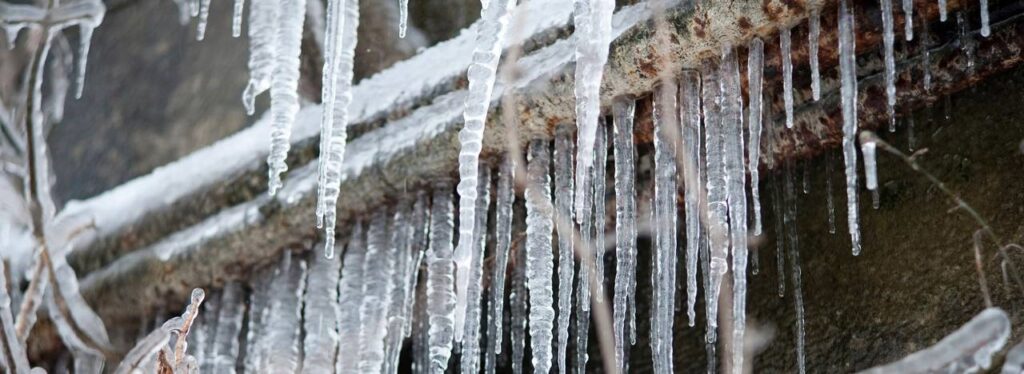Safeguarding Your Pipes from Cold Weather Issues: Critical Strategies
Safeguarding Your Pipes from Cold Weather Issues: Critical Strategies
Blog Article
This post directly below about How to Prevent Your Pipes From Freezing is extremely informative. Don't overlook it.

Winter can ruin your pipes, particularly by freezing pipelines. Below's how to stop it from occurring and what to do if it does.
Intro
As temperature levels decrease, the danger of icy pipes rises, potentially resulting in expensive repairs and water damages. Understanding just how to avoid frozen pipes is critical for property owners in cool environments.
Prevention Tips
Protecting at risk pipes
Cover pipes in insulation sleeves or use heat tape to safeguard them from freezing temperatures. Concentrate on pipelines in unheated or exterior areas of the home.
Home heating strategies
Maintain interior spaces adequately heated up, especially areas with pipes. Open cabinet doors to enable cozy air to circulate around pipes under sinks.
How to recognize frozen pipes
Try to find decreased water flow from faucets, unusual odors or sounds from pipes, and noticeable frost on subjected pipes.
Long-Term Solutions
Architectural modifications
Take into consideration rerouting pipes away from exterior walls or unheated locations. Include added insulation to attics, cellars, and crawl spaces.
Upgrading insulation
Buy premium insulation for pipelines, attic rooms, and walls. Appropriate insulation helps maintain regular temperatures and minimizes the danger of frozen pipes.
Shielding Exterior Plumbing
Garden hose pipes and outside taps
Detach and drain yard pipes before winter season. Set up frost-proof spigots or cover exterior taps with shielded caps.
Understanding Frozen Pipelines
What creates pipelines to ice up?
Pipelines ice up when subjected to temperatures listed below 32 ° F (0 ° C) for prolonged periods. As water inside the pipes freezes, it expands, putting pressure on the pipeline walls and possibly triggering them to rupture.
Risks and problems
Icy pipelines can bring about water supply disturbances, building damage, and pricey repair work. Ruptured pipes can flood homes and create comprehensive architectural damage.
Indicators of Frozen Water Lines
Recognizing frozen pipelines early can prevent them from bursting.
What to Do If Your Pipes Freeze
Immediate activities to take
If you suspect icy pipelines, keep faucets open to alleviate stress as the ice melts. Use a hairdryer or towels soaked in warm water to thaw pipelines gradually.
Conclusion
Preventing icy pipelines needs proactive measures and fast responses. By comprehending the causes, indications, and preventive measures, home owners can shield their pipes throughout winter.
5 Ways to Prevent Frozen Pipes
Drain Outdoor Faucets and Disconnect Hoses
First, close the shut-off valve that controls the flow of water in the pipe to your outdoor faucet. Then, head outside to disconnect and drain your hose and open the outdoor faucet to allow the water to completely drain out of the line. Turn off the faucet when done. Finally, head back to the shut-off valve and drain the remaining water inside the pipe into a bucket or container. Additionally, if you have a home irrigation system, you should consider hiring an expert to clear the system of water each year.
Insulate Pipes
One of the best and most cost-effective methods for preventing frozen water pipes is to wrap your pipes with insulation. This is especially important for areas in your home that aren’t exposed to heat, such as an attic. We suggest using foam sleeves, which can typically be found at your local hardware store.
Keep Heat Running at 65
Your pipes are located inside your walls, and the temperature there is much colder than the rest of the house. To prevent your pipes from freezing, The Insurance Information Institute suggests that you keep your home heated to at least 65 degrees, even when traveling. You may want to invest in smart devices that can keep an eye on the temperature in your home while you’re away.
Leave Water Dripping
Moving water — even a small trickle — can prevent ice from forming inside your pipes. When freezing temps are imminent, start a drip of water from all faucets that serve exposed pipes. Leaving a few faucets running will also help relieve pressure inside the pipes and help prevent a rupture if the water inside freezes.
Open Cupboard Doors
Warm your kitchen and bathroom pipes by opening cupboards and vanities. You should also leave your interior doors ajar to help warm air circulate evenly throughout your home.

I recently found that post about 6 Ways to Prevent Frozen Pipes while doing a search on the internet. Those who appreciated our blog entry if you please consider to share it. Thank-you for your time spent reading it.
Get Your Estimate Now Report this page